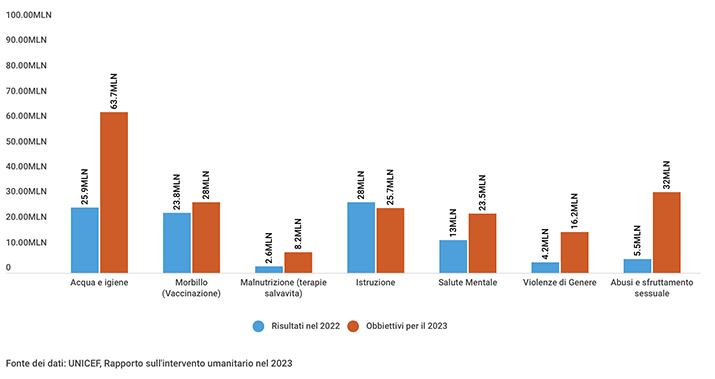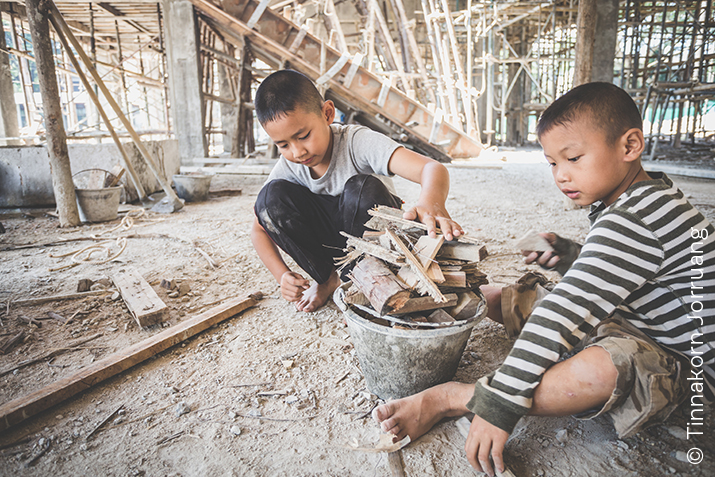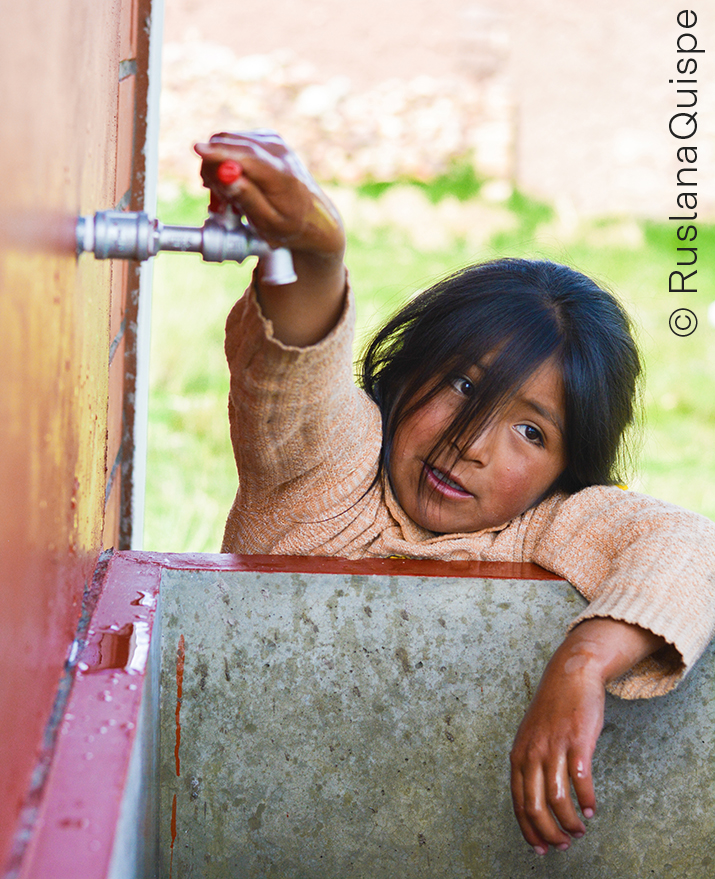HAPPENING AT THE UN
UNICEF LAUNCHES ITS BIGGEST APPEAL EVER
Today there are more children in need of humanitarian assistance than at any other time in recent history. The total is new, the causes are not, and they are always the same: wars, conflicts, displacement, mass population movements, epidemics and increasing rates of malnutrition. To make matters worse, there is climate change, which worsens crises and triggers new ones. This was the situation reported by the United Nations Children's Fund (Unicef), pointing out that in 2022, humanitarian needs increased drastically, largely due to the war in Ukraine, widespread increases in food insecurity and threats of famine due to climate-related factors. And then there are the epidemics, not just Covid, but those of diseases that have long since been eradicated in the West. Some people are still dying of measles because there are not enough vaccines.
The emergencies in Afghanistan and Ukraine, those of the Syrian refugees, the Democratic Republic of Congo and Ethiopia are the first to be addressed
The emergencies in Afghanistan and Ukraine, those of the refugees from Syria, the Democratic Republic of Congo and Ethiopia are the first five to be tackled. For these, Unicef is launching an appeal for 10.3 billion dollars to be used to assist more than 173 million people, 110 million of whom are under the age of 18.
Afghanistan, which has almost disappeared from the news radar, is the country that requires the most intervention, with USD 1.65 billion needed to start humanitarian assistance projects. Coming a close second, the tragic ranking signals that a strong response to the flow of Ukrainian refugees reaching Europe is urgently needed. A response for which more than $1 billion is needed. For the crisis in Syria, the UN Fund is asking for 867 million, over 862 million are needed to deal with the emergency in the Democratic Republic of Congo and 674 for Ethiopia.
Unicef's 2023 appeal, the largest ever in terms of funds needed, aims to provide strategies to deal with diverse and highly complex situations, in a context where the lingering effects of the Covid-19 pandemic and the economic instability are having a devastating impact on the living conditions of millions of children worldwide.
In 2022, humanitarian needs increased due to wars and famine threats
Climate change is further worsening the scope and intensity of these emergencies. The last 10 years have been the hottest on record, and the number of climate-related disasters has tripled over the last 30 years.
Action must be taken now, which is why the 2023 Humanitarian Action Overview Report sets a number of key targets: to reach 8.2 million children with treatment for severe acute malnutrition and over 28 million with measles vaccinations. The aim is to assist 63.7 million people with safe water and 23.5 with mental health and psychosocial support measures. In the fight against gender-based violence, 16.2 million people, including children and women, are to be targeted and an attempt will be made to reach 32 million of them with safe channels to enable them to report sexual exploitation and abuse.
On the education front, including at pre-school level, the goal is to support more than 25.7 million children.
But in addition to goals, there are also some achievements. And the beginning of every year is the time to take stock. During 2022, the humanitarian intervention, in partnership with UN agencies, non-governmental organisations, civil society and donors, paid off. 25.9 million people were reached with drinking and household water, 23.8 million children with measles vaccination and 2.6 million with life-saving treatment for severe acute malnutrition. Access to education was guaranteed to over 28 million students. This was complemented by interventions on combating gender-based violence and the opening of safe channels for more than 5 million people to report sexual abuse and exploitation.
Examining figures can be boring, especially when they concern lists of things done or to be done, crises to be faced, past emergencies and predictions of future ones. The fact remains that the only way to define the exact magnitude of a phenomenon is to measure it, otherwise one risks falling into the trap of oversimplifying, comparing completely different realities, and perhaps even establishing orders of priority that are not based on the objective consistency of the problems to be addressed.
The last 10 years have been the hottest on record and the number of climate-related disasters has tripled over the last 30 years
There are so many crises that it seems impossible to tackle them all. The doubt is that there is an underlying problem in the global economic development model. If one child's most important need is to receive the latest smartphone model and another's main need is to receive the measles vaccine, there must be something wrong.

UN - Unicef humanitarian action targets and achievements








